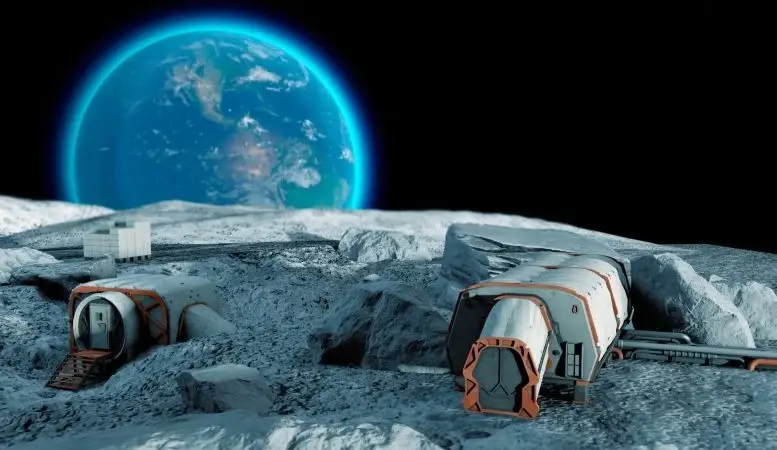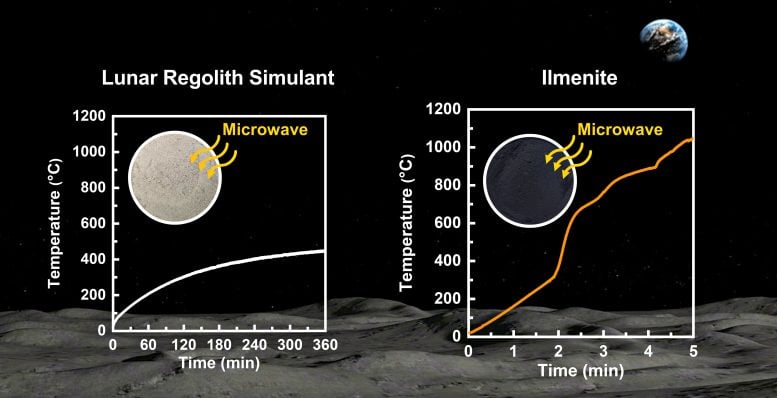Scientists plan to build a moon base
- August 22, 2024
- 0
NASA’s Artemis program aims to establish a lunar base as part of the Human Lunar Exploration Initiative. However, the public’s expectations for this space base may differ from
NASA’s Artemis program aims to establish a lunar base as part of the Human Lunar Exploration Initiative. However, the public’s expectations for this space base may differ from

NASA’s Artemis program aims to establish a lunar base as part of the Human Lunar Exploration Initiative. However, the public’s expectations for this space base may differ from those depicted in popular science fiction films. Building a lunar base requires a wide variety of construction materials that require significant transportation costs. These materials must be launched from Earth using rockets.
Since transporting construction materials from Earth to the Moon is expensive and time-consuming, local materials must be used to build a Moon base. One promising method for building a Moon base using local materials is microwave sintering, which solidifies the lunar regolith (soil) below its melting temperature.
Research is actively being conducted worldwide on sintering lunar soil using lasers, solar energy, and microwaves. Among these techniques, microwave sintering is a prominent technology developed by various institutions, including NASA, ESA (European Space Agency), and the Korea Institute of Civil Engineering and Construction Technology (KICT, President Kim Byung-suk).
A research team led by Dr. Hyu-Soung, Shin from KICT’s Future and Smart Construction Research Department (Dr. Jangguen, Lee, Dr. Young-Jae, Kim, Dr. Hyunwoo, Jin) is currently conducting research on the simulated structure. The lunar brick regolith was baked in a microwave oven. This research uses sintering techniques similar to ceramic firing and raises the temperature to create a strong brick.

A brick made from a lunar regolith simulator has a strength of over 20 MPa, which is comparable to concrete. Microwave heating depends on the dielectric properties of the material, so a detailed study of the dielectric properties of the lunar regolith is necessary. Currently, there is insufficient research on how the lunar regolith interacts with microwave heating at different temperatures.
As part of the microwave sintering research, the research team investigated the dielectric properties of the Korean Lunar Simulator (KLS-1) and ilmenite (iron titanate) at different temperatures. Ilmenite is a mineral found on the lunar surface and is known to increase the efficiency of microwave heating. However, detailed studies on the dielectric properties of ilmenite and its behavior during microwave heating have not been conducted.
The results of the study show that the lunar regolith simulator has the property of microwave transparency, which makes it difficult to heat. However, ilmenite (iron titanate) interacts strongly with microwaves due to its unique crystal structure that allows it to heat rapidly to high temperatures. In addition, analysis of the crystal structures of the lunar regolith and ilmenite simulator successfully revealed the key factors contributing to the increase in mineral-microwave interaction.
Using ilmenite, a local resource, as a heating element in the construction of a lunar base using microwave sintering means efficient and rapid production of building materials. This research is expected to lay an important foundation for the development of microwave technology for future lunar exploration and lunar base construction, said Kim Dr. Young-Jae of KICT.
Source: Port Altele
As an experienced journalist and author, Mary has been reporting on the latest news and trends for over 5 years. With a passion for uncovering the stories behind the headlines, Mary has earned a reputation as a trusted voice in the world of journalism. Her writing style is insightful, engaging and thought-provoking, as she takes a deep dive into the most pressing issues of our time.